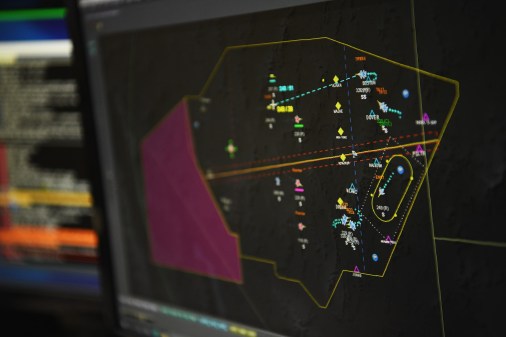Air Force issues BAA for ‘extreme’ computing tech

The Air Force Research Lab is soliciting white papers for cutting-edge computing capabilities that could address size, weight and power constraints for military platforms.
The broad agency announcement, released Wednesday on Sam.gov, comes about a month after AFRL’s information directorate opened a new Extreme Computing Facility in Rome, New York.
The lab is looking for vendors for research, development, integration, test and evaluation of “technologies/techniques to support research in the focus areas computational diversity and efficient computing architectures, machine learning and artificial intelligence in embedded system and architectures, computing at the edge, nanocomputing, space computing, and robust algorithms and applications,” per the BAA.
Nearly $500 million in total funding is anticipated for the initiative in fiscal 2024-2028.
AFRL wants to explore and develop computational capabilities “with greater sophistication, autonomy, intelligence, and assurance for addressing dynamic mission requirements imposed by Command, Control, Communications, Computers, Intelligence, Surveillance and Reconnaissance (C4ISR) and Cyber applications and size, weight, and power (SWaP) constrained Air Force Platforms,” according to the call for white papers.
Of particular interest is emerging tech that offers “revolutionary computational capabilities which enable greater system adaptability, autonomy, and intelligence while improving information availability throughout the C4ISR enterprise. This includes high performance embedded computing that supports on-board processing using advanced machine learning applications, robust and secure machine learning technology to strengthen and defend military applications of artificial intelligence and machine learning, non-conventional neuromorphic systems and applications, tools to increase the productivity of developing applications, methods and architectures that can provide dramatic improvements in the performance/cost of systems,” the BAA states.
For nanocomputing, the lab is looking for ways to overcome the limitations of today’s semiconductor tech.
“Currently, the competitive advantages of nanocomputing cannot be realized with current CMOS technologies and novel architectures. Only with new, CMOS compatible materials and devices that enhance and/or complement existing nanoelectronics will acceleration of nanocomputing occur. The objective of this research is to explore current and emerging nanoelectronics for information processing towards novel bio-inspired computing architectures that utilize ultra-low consumed power,” according to the solicitation.
Potential applications of the technology could include autonomous systems and neuron-electronic bio-interfaces, according to AFRL.
Efforts related to neuromorphic computing and machine learning are geared toward enhancing knowledge and development of “computationally intelligent systems towards increased perception, adaptability, resiliency, and autonomy for energy efficient, agile” Air and Space Forces platforms.
In this regard, AFRL is interested in the utilization of advancements in computational neuroscience, nanoelectronics, nanophotonics, high-performance computing, and material science.
Another area of focus for the anticipated work is “embedded deep learning and the trade space of accuracy vs. computing resources as typical deep neural networks are pushed to low size, weight, and power embedded devices.”
R&D for “trusted and robust” machine learning capabilities that are resilient to “perturbations” in input data and secured against digital attacks from potential enemies, is also expected to be part of the initiative.
Additional applications for the tech could include pattern recognition and signature analysis, autonomous adaptive operations, human-machine collaboration, neural control of complex systems, in situ training of neuromorphic hardware, and online learning in neural networks, per the BAA.
AFRL recommends vendors submit white papers by Oct. 4 for opportunities aligned with funding for fiscal 2024.






